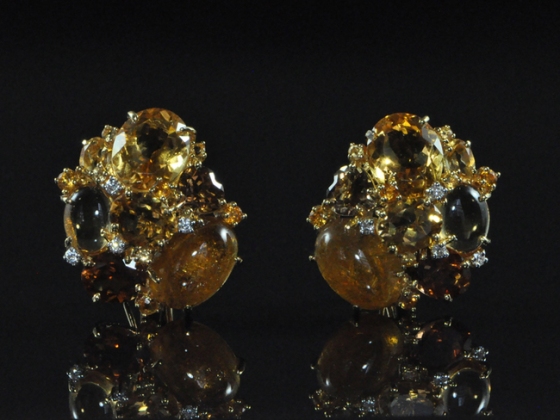With Christmas season upon us I have been having far too much fun playing around with the jewellery in the shop, so I thought I would give you a little sneak peek into what I got up to last week:

21ct diamond necklace from Tiffany & Co at Moira Jewels
Eeeeeh just a little something I threw on! This is the most stunning diamond necklace from Tiffany’s, which belongs to Moira Jewels at Richard Ogden. Fit for any old Christmas party I say! Next time you walk through the Burlington Arcade, do make sure to peek into our windows at Richard Ogden – the centre one is extra prominent at the moment with a glorious selection of Moira’s jewellery!
… and then I may have found my way to our pink window…
Oopsy! I couldn’t help myself. On the far left you can see a five stone Garnet gold ring. Five graduated oval almandine garnets are set with rose cut diamond points and it is all mounted in a Victorian style carved claw setting in yellow gold.
Next to it you can see a HUGE purple Tourmaline and diamond cluster ring, where the tourmaline is cabochon cut and surrounded by a single row of brilliant cut diamonds.
One my ring finger I am wearing a Tourmaline (7.03 carats!) and diamond cluster ring. Such a sweet design which I know will woo a few of you. I just love cluster rings by the way, and I believe that Diana – and now Kate Middleton’s sapphire and diamond cluster ring has eternalised the design. I get so many people coming in to look at cluster rings, and mainly the sapphire and diamond ones – understandably!
Continuing on to the far right, you can see my very favourite ring in the whole shop: the Star Ruby whose acquaintance we made in the blog post: A Star Ruby Romance. It is just such an extraordinary design and I can’t wait to see who ends up buying it!
Sooo that was an enjoyable way of finishing off my Friday afternoon and I can’t wait to go back in again tomorrow to see what new (old) pieces I will have to try on!
































